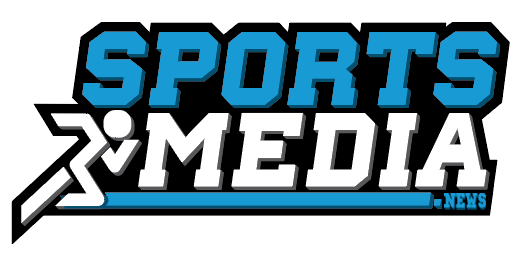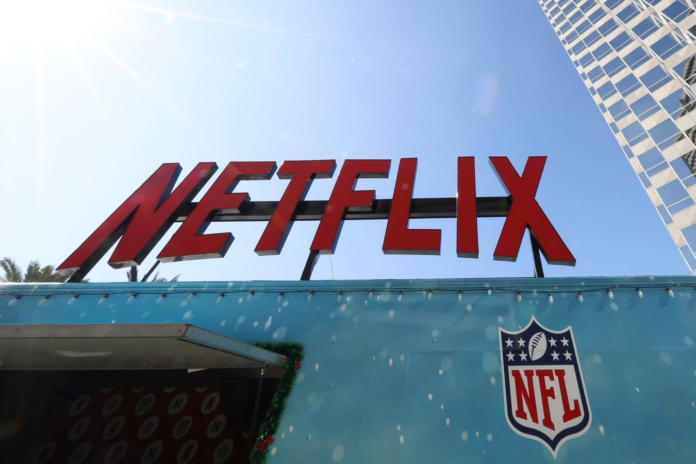As football season approaches, so too does one of the greatest annual marketing opportunities in America: sports sponsorships. For brands aiming to engage loyal, high-energy audiences, there may be no better channel than sports. From packed college stadiums to prime-time NFL slots, sports offer unique moments of community, culture, and connection.
NEW ORLEANS, LOUISIANA – DECEMBER 01: Netflix and NFL signage advertising the NFL’s two Christmas Day marquee games streaming live on Netflix on December 01, 2024 in New Orleans, Louisiana. (Photo by Aaron M. Sprecher/Getty Images) Getty Images
But how can brands do more than just slap their name on a scoreboard? To understand the strategic blueprint for modern sponsorships, I spoke with Mike Proulx, Research Director at Forrester and author of Maximize the Value of Your Sports Sponsorships, along with two companion reports on case studies and activation planning tools.
Loyalty in the Age of Fandom
Proulx opened with a bold truth: “Sports fandoms are among the most loyal and active communities that exist.” Whether it’s Alabama or Ohio State, the Kansas City Chiefs or the Eagles, sports fans show up with unmatched intensity. And yet, the sports landscape is evolving. Traditional leagues like the NFL and NCAA football remain juggernauts, but emerging formats are attracting fresh and often younger demographics. Pickleball, cricket, women’s leagues, and even combat sports like UFC and WWE are expanding the fan base and offering brands new playing fields.
A New Playbook: Four Phases of Sponsorship Strategy
At the heart of Proulx’s research is a four-part lifecycle model for maximizing ROI: Selection, Planning, Activation, and Renewal. Each phase requires discipline—and creativity.
1. Selection: Know Your Why
Proulx emphasized that the most overlooked—but vital—starting point is alignment. Brands must ensure their identity and mission match the culture of the sport and league. One standout example? AARP’s sponsorship of pro pickleball. The match was natural—Pickleball skews 50+, and AARP stands for healthy, active aging. “It just makes sense,” Proulx said.
MORE FOR YOU
Other strong alignment examples include:
Bud Light and the NFL: A natural fit, aligning with communal drinking occasions like tailgating.
Twisted Tea and the National Surfing League: A younger, edgier brand finding the right niche.
Western & Southern Financial and Cincinnati Tennis: A hyperlocal sponsorship that supported community identity and revitalized a nearly discontinued pro event.
Even offbeat examples like Liquid Death’s Eagles sponsorship show the complexity of modern deals. While the alignment may not be obvious, the brand secured pouring rights for iced tea, which helped them test new product lines in key markets like Philadelphia.
2. Planning: Don’t Just Sponsor—Co-Create
Gone are the days of cookie-cutter bronze, silver, and gold packages. Today’s best sponsorships involve co-creation. According to Proulx, brands should work with leagues to create ownable, meaningful moments—rather than just paying for logo placements. The best sponsorships are collaborative, bespoke, and steeped in shared storytelling.
3. Activation: Squeeze the Juice
Proulx was blunt: “If you’re only running TV ads and putting your name on a stadium, you’re leaving value on the table.” Smart brands plan across three key moments: before, during, and after the event. Activation must include on-site engagement, real-time content capture, and amplification through social and digital. It’s about turning presence into participation. He cited tools from his activation framework that give marketers a structured way to plan, deploy, and extend their sponsorship reach.
4. Renewal: Measurement Is the Missing Link
While brands are pouring more money into sponsorships, many still struggle to measure ROI. The default metrics—awareness and consideration—are helpful but often insufficient. To justify multi-year deals, Proulx recommends tying performance back to the original business objective, whether that’s entering a new market, expanding reach, or engaging a new demo.
The Streaming Scramble: Media’s New End Zone
Proulx noted that live sports are among the last bastions of must-watch TV. With over 90% of top-viewed shows being sports broadcasts, every major streamer is battling for rights.
Netflix is leaning into one-off events and WWE programming.
Amazon Prime has Thursday Night Football.
Apple TV+ has partnerships with MLS and MLB, and may soon acquire F1 rights.
Disney’s ESPN+ will launch an ad-supported standalone sports platform this fall, likely integrating sports betting and interactive features.
Streaming will soon become the primary pipeline for live sports—and with it, a massive shift in advertising strategy.
As the sports sponsorship arena grows more crowded and more fragmented, brands need to be more intentional than ever. Fandom is powerful, but it must be earned. As Proulx reminded me, “Sponsorships are more than a logo—they’re a relationship.” For brands willing to do the hard work of alignment, co-creation, and activation, the reward is massive: a seat in the hearts—and rituals—of fans who rarely forget those who show up.


